Can Border Collies Tolerate Cold Weather? Exploring Their Adaptability
Border Collies are known for their intelligence, agility, and remarkable herding abilities. These energetic dogs have a strong work ethic and an innate desire to please their owners. As a result, many potential owners wonder how well these dogs can tolerate cold weather.
Like any other breed, it’s essential to understand their adaptations and abilities to handle chilly conditions to ensure their health and happiness.

Originating from the border area between England and Scotland, Border Collies have evolved to work in varying climates, including the often cold and wet environments of their native regions. Their double coat – a dense, weather-resistant undercoat paired with a coarser outer coat – provides a natural protection against cold, wet, and windy conditions. However, it’s important to note that individual dogs may have different tolerance levels based on factors such as age, health, and activity.
In extreme cold weather, Border Collies, like any other dog breed, will require extra care and precautions. Providing shelter, proper gear, and monitoring their behavior will help in ensuring their comfort and well-being. Although these resilient dogs can adapt to various environments, it’s upon the owner to understand their needs and ensure a comfortable and safe life for their furry companion.
Border Collies and Cold Weather
Border Collies, known for their intelligence and agility, originate from the border regions between England and Scotland. The climate in this region is generally cool, with cold winters and varying weather conditions. As a result, Border Collies have evolved to adapt and tolerate cold weather quite well.
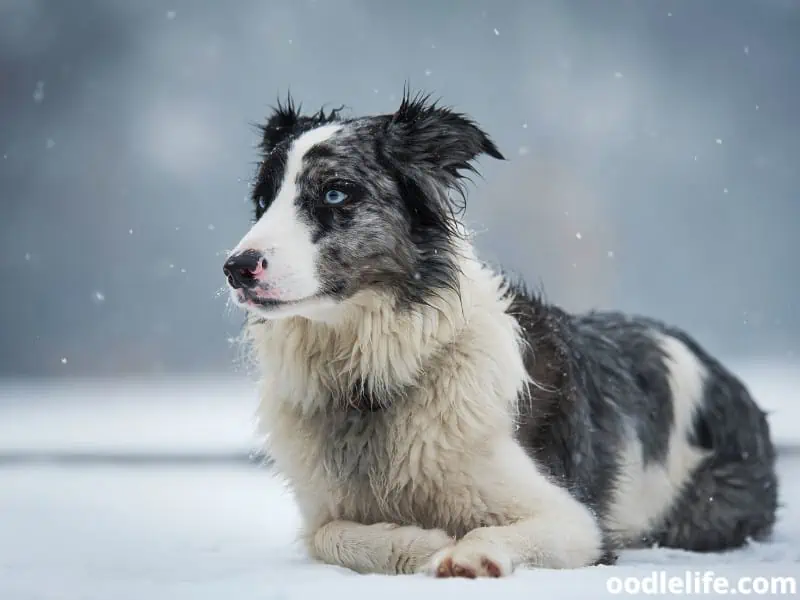
Their double coat is one of the key factors in regards to their cold tolerance. With a dense undercoat providing insulation and a waterproof topcoat, Border Collies are capable of withstanding frigid temperatures. The coat also allows them to work effectively as herding dogs in chilly, damp, and sometimes snowy conditions.
However, it’s essential to keep their coat well-groomed and free of mats to maintain its insulating properties.
While Border Collies can endure the cold, it doesn’t necessarily mean they should be left outside for extended periods, especially during extreme winter conditions. As pet owners, it’s vital to pay attention to their well-being and provide them with adequate shelter, warmth, and care. Always be on the lookout for signs of discomfort or hypothermia, such as shivering, lethargy, or frostbite.
Remember, even the hardiest of dogs can succumb to the effects of frosty weather if not adequately cared for.
In terms of physical activity, the cold climate might be beneficial for Border Collies. They have a naturally high energy level, and the brisk weather allows them to play and exercise without the risk of overheating. So don’t hesitate to take your Border Collie for a snowy hike or play a fun game of frisbee in a frosty park.
Just make sure you both stay warm and safe while enjoying each other’s company in the great snowy outdoors.
In short, Border Collies can indeed tolerate cold weather, but as responsible pet owners, we must ensure they’re safe, comfortable, and adequately taken care of during wintry conditions.
Coat and Insulation
Border Collies are known for their ability to work in various weather conditions, including cold environments. Their coat and insulation play a significant role in this adaptability.
Double Coat Characteristics
Border Collies have a double coat, which consists of a dense undercoat and a longer, more weather-resistant outer coat. This combination helps keep them warm and insulated in cold conditions. The undercoat traps warm air close to the skin, while the outer coat repels water and snow, preventing them from getting damp and chilled.

For example, think of the double coat as a two-layer winter outfit: The undercoat acts like a cozy fleece sweater, and the outer coat is the waterproof jacket keeping you dry and protected from harsh weather conditions.
Shedding and Grooming
Since Border Collies have a double coat, they tend to shed, especially during seasonal changes. Regular grooming is crucial to manage shedding, maintain the coat’s insulation properties, and ensure the dog’s overall health and comfort.
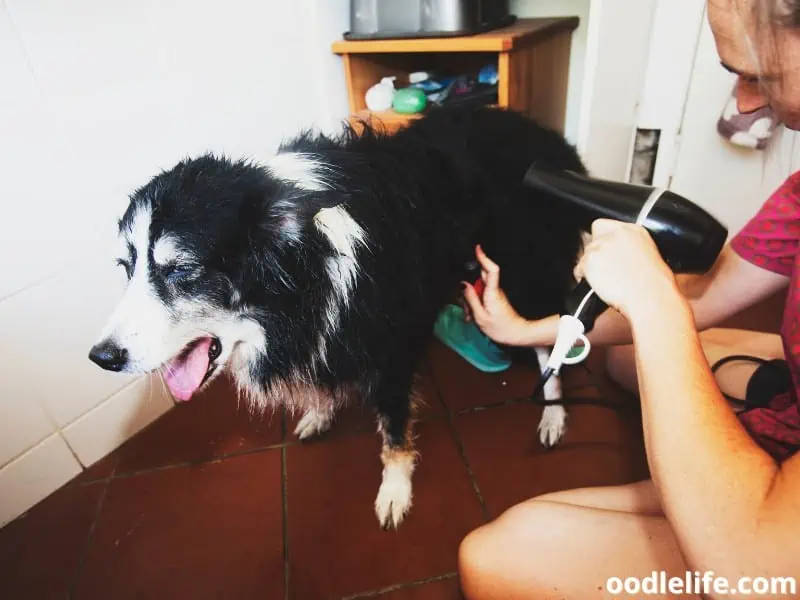
Some handy grooming tips include:
- Brush your Border Collie regularly, at least once or twice a week, to remove loose hairs and keep the coat tangle-free.
- During shedding season, increase grooming frequency to prevent excessive shedding and maintain insulation.
- Use a slicker brush or undercoat rake to effectively remove loose undercoat hairs.
Keeping your Border Collie’s coat well-maintained not only enhances insulation but also keeps them looking like a well-groomed canine royalty. To sum it up, make grooming a habit, and both you and your pooch will be happier for it!
Signs of Discomfort
Border Collies, like any other breed, may experience discomfort in cold weather conditions. As a dog owner, it is important to recognize specific signs that indicate stress or potential danger for your furry friend. In this section, we will explore the sub-topics: Shivering and Lethargy, Hypothermia, and Frostbite.

Shivering and Lethargy
Shivering is a common response when a dog is cold. It’s a natural mechanism for generating heat in the body through rapid muscle contractions. However, shivering can also indicate discomfort or pain, so if your Border Collie is shivering excessively, it’s a sign that the cold is affecting them quite a bit.
Lethargy is another sign that your Border Collie may not be tolerating the cold well. They may appear sluggish, less energetic, or less responsive than usual. This could be due to the fact that their body is diverting energy toward keeping them warm, at the expense of their usual playful demeanor.
Keep an eye on your dog if they’re exhibiting these signs, and consider bringing them indoors or providing additional warmth.
Hypothermia
Hypothermia occurs when a dog’s body temperature falls below its normal range (typically around 101-102.5°F or 38-39°C). Signs of hypothermia in Border Collies include, but are not limited to:
- Excessive shivering
- Lethargy
- Weakness
- Decreased heart rate
- Pale or blue-tinged gums, lips, and skin areas
If you suspect your Border Collie is experiencing hypothermia, it’s crucial to provide immediate warmth and contact your veterinarian for further advice.
Frostbite
Frostbite occurs when a dog’s skin and other tissues freeze from exposure to extremely cold temperatures. Border Collies are at risk of frostbite, especially on their extremities such as ears, tail, and paws. Signs of frostbite include:
- Pale, gray, or blue skin in affected areas
- Coldness and brittleness to the touch
- Swelling or blisters
- Pain when touched
If you notice any of these signs of frostbite, it’s essential to provide gentle warmth to the affected areas and seek veterinary attention. Remember, cold weather doesn’t have to mean the end of outdoor fun for you and your Border Collie, but it does require some extra attention to ensure their well-being and comfort.
Outdoor Precautions
Weather Conditions and Temperature
Border Collies are generally able to tolerate cold weather, as they have a dense double coat that provides insulation against harsh conditions. However, it’s still important to keep an eye on your furry friend, especially during extreme winter temperatures. When the temperature drops below freezing, make sure to limit your dog’s time outdoors and provide extra shelter for them if necessary.
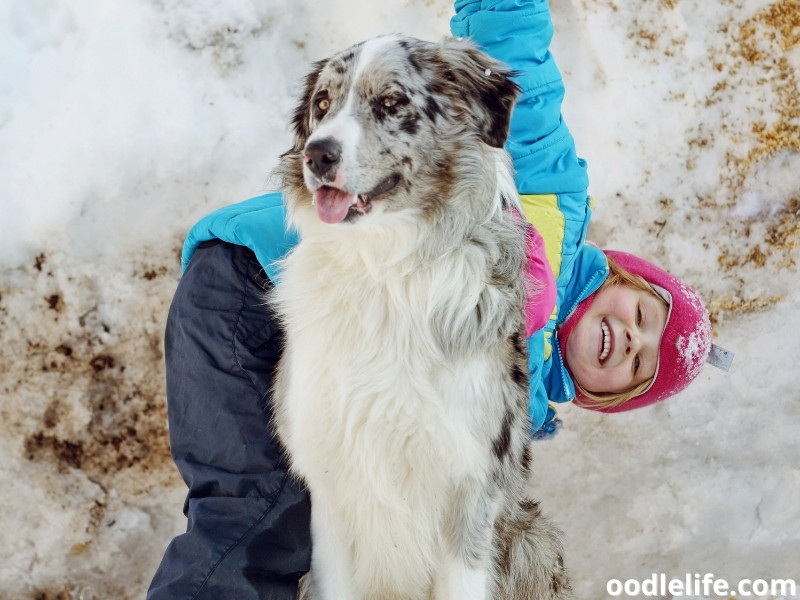
Confidence tip: Invest in a thermometer and keep track of outside temperatures. This way, you will be informed and can prepare better for your dog’s outdoor adventures.
Learn from experience: Even the most agile of Border Collies might have some difficulty navigating slippery surfaces. Be cautious when going on walks or playing in the snow.
Snow and Ice Protection
To ensure your Border Collie stays safe during the colder months, there are a few simple precautions you can take.
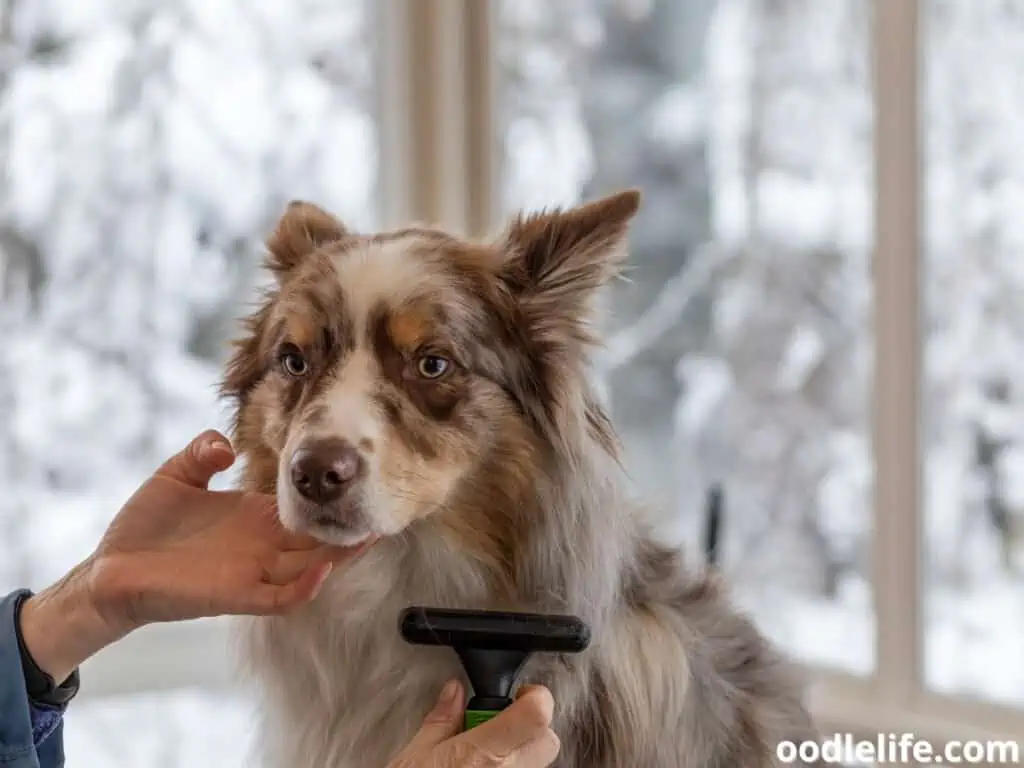
- Paw protection: Cold weather can be harsh on your dog’s paws. Using booties can help protect their paws from snow, ice, and cold surfaces. If your dog is not a fan of wearing booties, consider applying a pet-safe paw balm to provide a protective layer.
- Coat care: Keep your dog’s coat well-groomed and clean. A well-maintained coat will provide better insulation and prevent matting, which can lead to discomfort and reduced ability to stay warm.
A word of caution: Be careful when using ice-melting products on your property, as they can be harmful to your dog. Opt for pet-safe alternatives when possible.
Pro tip: After a snowy walk or play session, dry off your Border Collie’s coat thoroughly to help them retain body heat.
By taking these outdoor precautions, you can ensure your Border Collie safely enjoys the cold weather while staying warm and cozy.
Indoor Care
When it comes to keeping your Border Collie comfortable during cold weather, providing proper indoor care is essential. This includes ensuring the right environment within your home and offering a cozy and safe space for your furry friend.

Warm Shelter and Bedding
A Border Collie’s natural double coat helps them tolerate colder temperatures, but they still need a warm and comfortable shelter. Ideally, your dog should have a haven within your home, where they can find solace from the cold. Provide a designated space like a crate or corner for your Border Collie to rest.
A comfy bed, along with some blankets or even a cozy dog sweater, will help to maintain their body warmth during colder months.
Remember, when it comes to their bed, the cozier, the better! Think of it as their “snuggle zone” – a place where they can curl up and feel safe when temperatures start to drop.
Temperature Monitoring
Being vigilant about indoor temperature is vital when it comes to the well-being of your Border Collie in colder weather. Use a thermometer to monitor your home’s temperature. Ideally, you should aim to maintain a stable indoor temperature of around 65-75°F (18-24°C) so your Border Collie can feel comfortable.
Be mindful of drafty areas near doors and windows, and consider placing draft stoppers or weather stripping around them to better insulate your home. If necessary, you can also use space heaters to help maintain a consistent, comfy temperature. Just be sure to keep the heaters at a safe distance from your dog and their bedding to avoid potential hazards.
In a nutshell, indoor care for your Border Collie during cold weather revolves around offering a warm shelter and monitoring your home’s temperature. With these measures in place, you can help ensure your canine companion stays warm and content during the chilly months.
Proper Clothing and Accessories
Jackets and Sweaters
Border Collies are a hardy breed, but they can still benefit from some extra protection during cold weather. To keep your Border Collie comfortable in chilly temperatures, consider investing in a well-fitting dog jacket or sweater. Cold weather jackets can provide insulation, while sweaters offer an additional layer of warmth for your furry friend.
When selecting the perfect jacket or sweater for your Border Collie, keep in mind factors like size, material, and durability. A good-quality jacket will not only keep your dog warm but also allow them maximum mobility during outdoor activities.
When it comes to materials, it is advisable to look for jackets made with waterproof and windproof fabric such as Gore-Tex or similar alternatives. Sweaters made from natural fibers like wool or a blend of fleece and synthetic materials provide adequate insulation and maintain warmth even when wet.
Paw Protection
In addition to keeping their body warm, don’t forget about your Border Collie’s paws. Cold weather can cause the ground to become icy and rough, posing potential harm to your dog’s sensitive paw pads. To ensure the safety and comfort of your pet during prolonged exposure to harsh winter conditions, consider using paw protection.
Booties or dog shoes are great options for safeguarding those precious paws from slipping on ice, freezing temperatures, and harmful substances like road salt or antifreeze. These accessories come in various sizes, materials, and designs, designed to serve specific purposes such as providing grip or protecting against extreme cold and wetness. When selecting the right pair of booties, look for ones that have anti-slip soles and secure fastening mechanisms to keep them in place during outdoor adventures.
By providing your Border Collie with proper clothing and accessories, you can ensure their comfort and safety during those cold winter months. So bundle up and enjoy some quality time outdoors with your furry friend!
Exercise and Activity
Border Collies are energetic and intelligent dogs, requiring regular exercise and mental stimulation, even during cold winter months. With some adjustments and creativity in their activities, you can ensure a happy and healthy Border Collie during winter.

Adapting Winter Activities
When temperatures drop significantly, outdoor activities like playing fetch, going for walks, or participating in winter sports can still be enjoyable and beneficial for Border Collies. However, it’s crucial to take necessary precautions:
- Ensure that your Border Collie has proper winter attire, such as a dog jacket, to keep them warm while outdoors.
- Avoid taking your dog out during extremely cold weather or snowstorms.
- Keep an eye on their paws to check for signs of frostbite or discomfort due to ice and snow.
- Decrease outdoor activity duration depending on the weather conditions. Your Collie might not be able to tolerate long sessions like in summer or mild weather.
Indoor Exercise Options
During winter months, when spending extended periods outdoors may not be feasible, ensuring your Border Collie remains active and engaged is essential. Introduce a variety of indoor exercises to keep them occupied and satisfied:
- Brain games: Puzzle toys, hide and seek, or treat-dispensing toys can engage and challenge your Border Collie’s intelligence.
- Treadmill training: Teach your dog to use a treadmill for indoor exercise. This can simulate walking and provide a controlled environment to work on their endurance.
- Indoor agility course: Create a makeshift course using household items like broomsticks and boxes, allowing your Collie to practice their agility skills.
- Herding exercises: Utilize their natural herding instincts by encouraging them to round up soft toys and placing them in an assigned area.
- Obedience training: Reinforce your Border Collie’s training with indoor sessions to practice commands and work on new tricks.
In conclusion, Border Collies can tolerate cold weather with proper winter attire and adjusted activities. Creatively adapting outdoor exercises and incorporating indoor options will ensure your Border Collie stays active, healthy, and happy during the winter months.
Health Considerations
Age and Energy Levels
Border Collies are energetic dogs with a keen ability to withstand various weather conditions, including cold temperatures. However, their ability to tolerate colder weather depends on factors such as age and energy levels. Younger and more active dogs typically generate more body heat, allowing them to handle lower temperatures better than older or less active dogs.
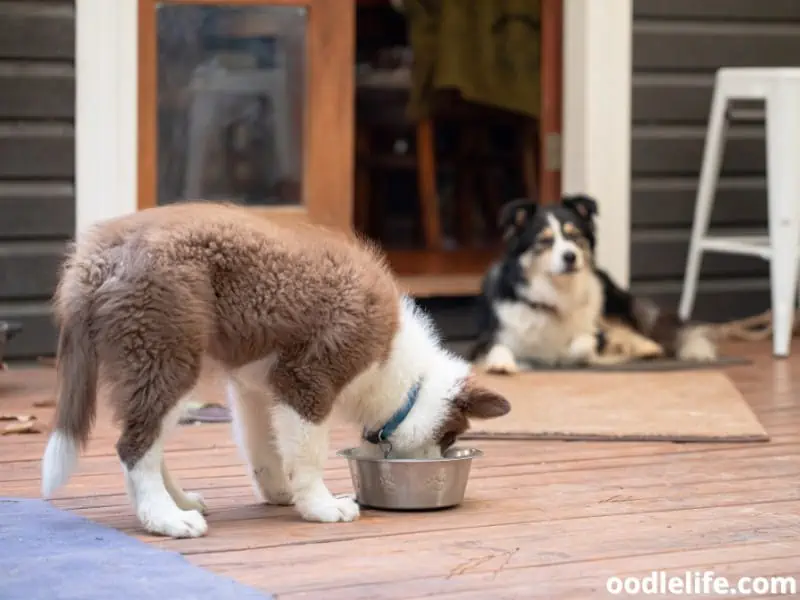
For example, a young and energetic Border Collie might happily frolic in the snow, while an older or less active one may prefer to stay inside or require additional warmth through clothing or heated beds. Keep an eye on your dog’s behavior in cold weather – if they seem uncomfortable or reluctant to go outside, it’s essential to address their needs and make adjustments accordingly.
Nutrition and Diet
A well-balanced diet is crucial for a Border Collie’s overall health and ability to tolerate cold weather. During colder months, dogs may require extra calories to maintain their body temperature and energy levels. Keep in mind that every dog is different, so it’s essential to consult your veterinarian for personalized dietary recommendations.

High-quality dog food that includes lean proteins, carbohydrates, and essential fatty acids can provide the necessary energy to keep your furry friend warm and active during the winter season. Ensure that there is an ample supply of fresh water for your dog, as dehydration can make it more challenging for them to regulate their body temperature.
Additional supplementation, such as vitamins and minerals, may be beneficial in some cases. These can help support your Border Collie’s immune system and overall health, making them more resilient to potential cold-related health issues. Always consult with your veterinarian before introducing any new supplements to your dog’s diet.
Remember, temperature regulation and overall health are interconnected. By paying attention to your Border Collie’s age, energy levels, and nutrition, you can ensure that they are equipped to handle cold weather conditions safely.
Conclusion
Border Collies are a highly adaptable breed, known for their intelligence and high energy levels. Their ability to tolerate cold weather may be related to various factors such as their thick double coats and their agility.
One study found that species adapted to cold climates may have altered glucose metabolism, suggesting that cold weather tolerance might be observed in Border Collies. While this study does not explicitly prove that Border Collies can tolerate cold weather, it might give an indication that they possess some traits that could help them in cold conditions.
It’s important to note that every dog is an individual, and cold tolerance may vary depending on factors like age, health, and degree of acclimation to the cold. Despite their adaptability, it’s essential to take precautions when exposing any dog, including Border Collies, to cold temperatures. For instance, providing a warm shelter and monitoring the dog’s behavior for signs of discomfort would be wise.
In conclusion, Border Collies may possess some traits that help them adapt to colder climates. Nonetheless, it’s crucial to monitor the dog’s well-being and comfort during cold weather and take necessary precautions to ensure their safety.